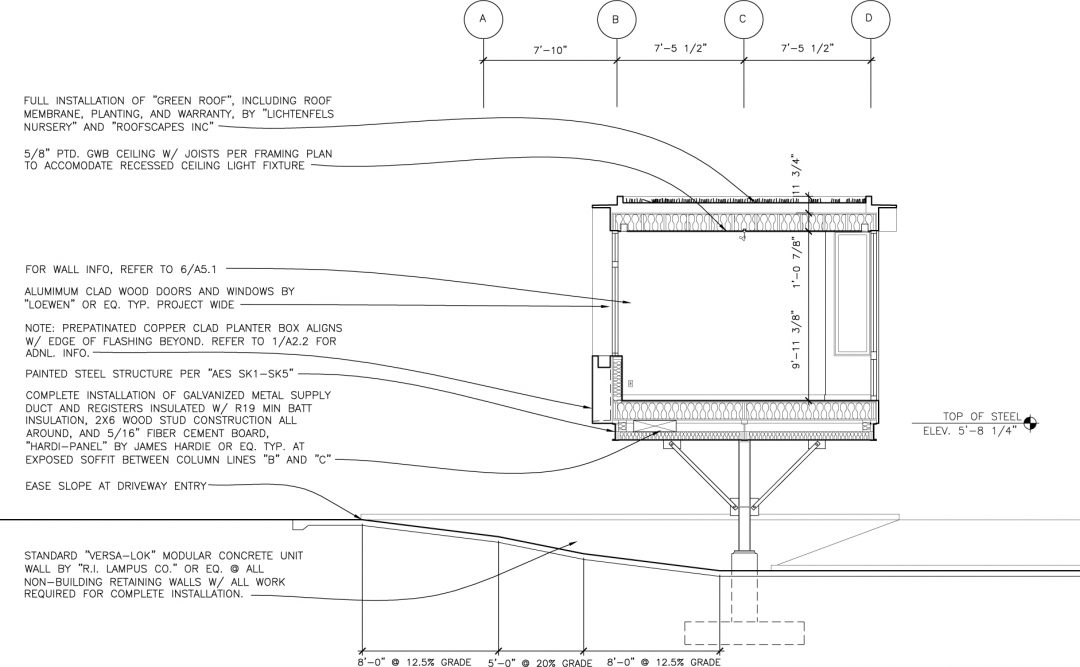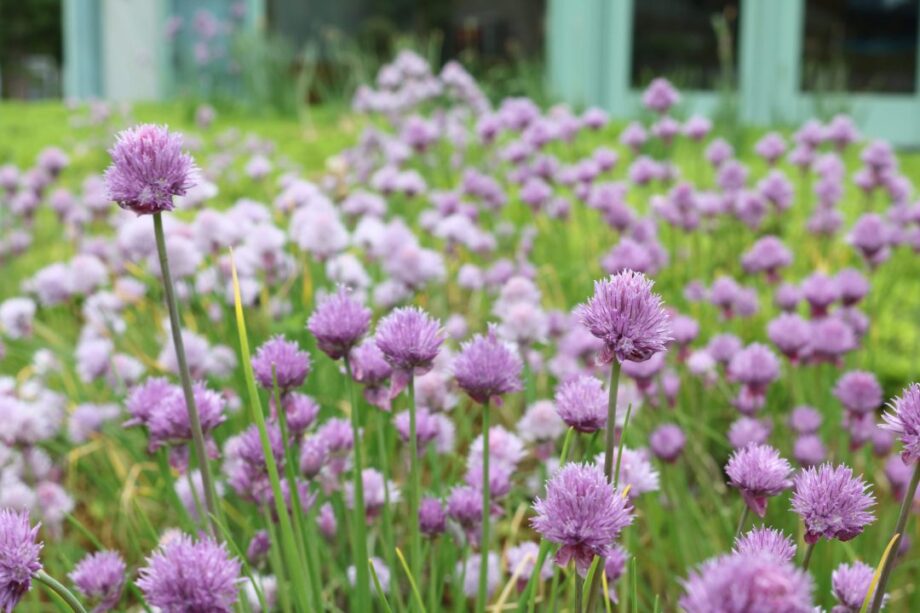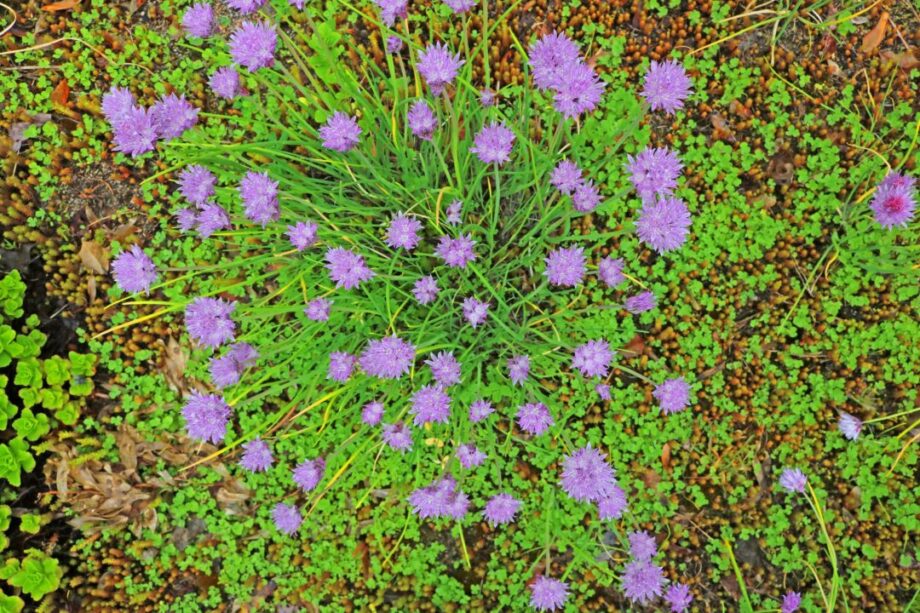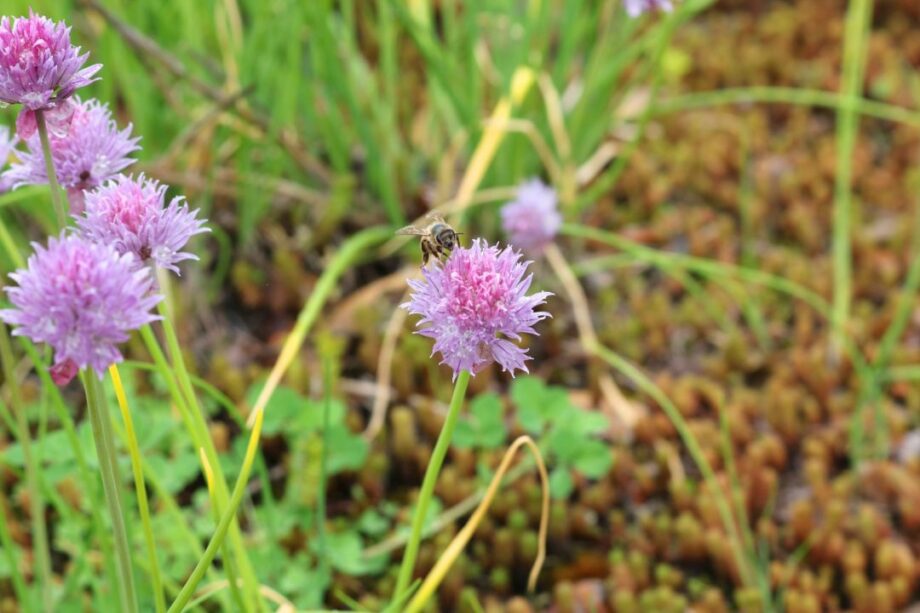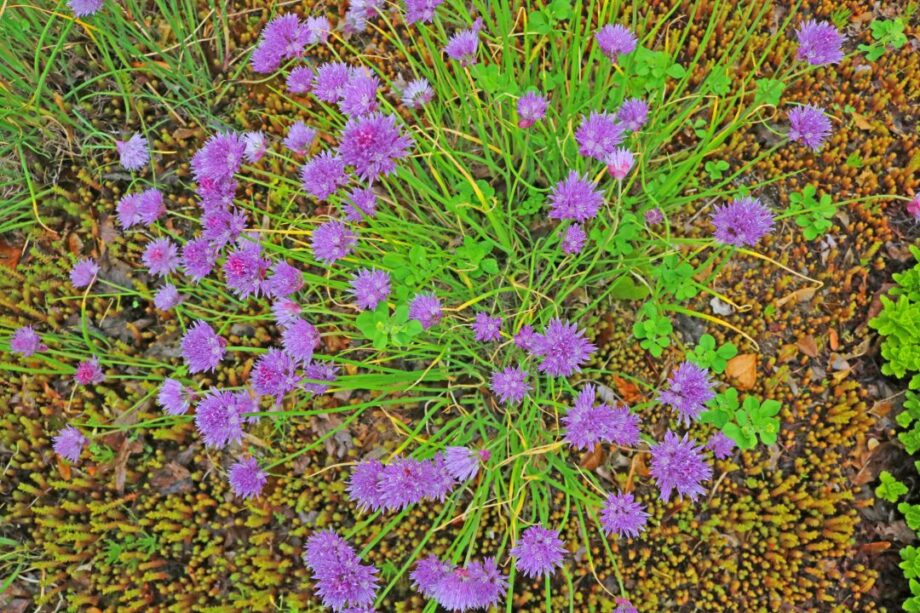How green was our roof yesterday, despite it being a rainy and foggy day? VERY! This is the view towards our neighbor’s home from Bea’s office.
Having a green roof is the dream of many people. It is beautiful and can boost the sustainability of any home. A green roof will improve the energy efficiency of a roof assembly. It is considered a “cool roof”, reducing the heat island effect in urban environments, and it helps manage run-off during rainy days.
Roofs and terraces are also considered the “fifth facade”, particularly in dense contexts like New York or other major cities. They become precious “real estate” in terms of creating extra private space (or semi-private space when installed in offices). To learn more about the fifth facade concept, we recommend looking this Weburbanist article.

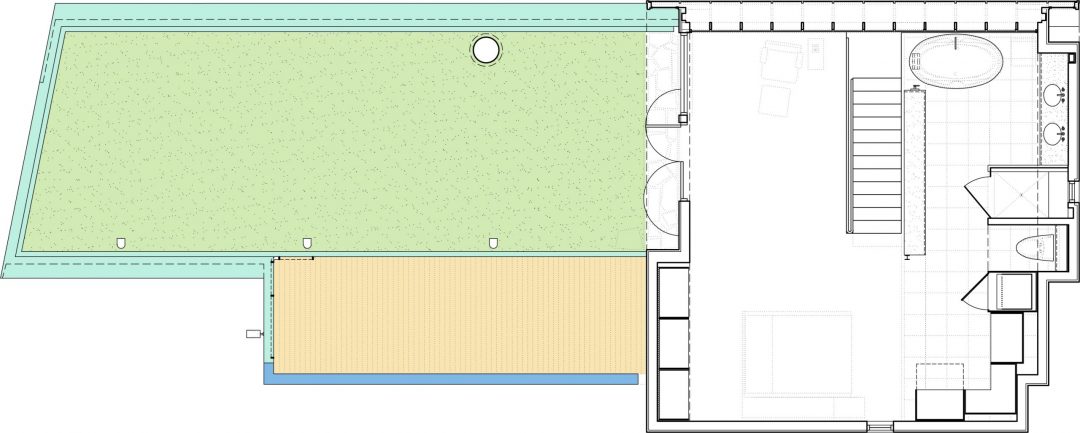
A green roof can be installed on new and old homes, provided a Structural Engineer is involved in adding the soil and water load to the typical rain/snow load. At Fisher ARCHitecture, we proud ourselves with creating thoughtful, contextual designs that optimize the use of an ENTIRE building.
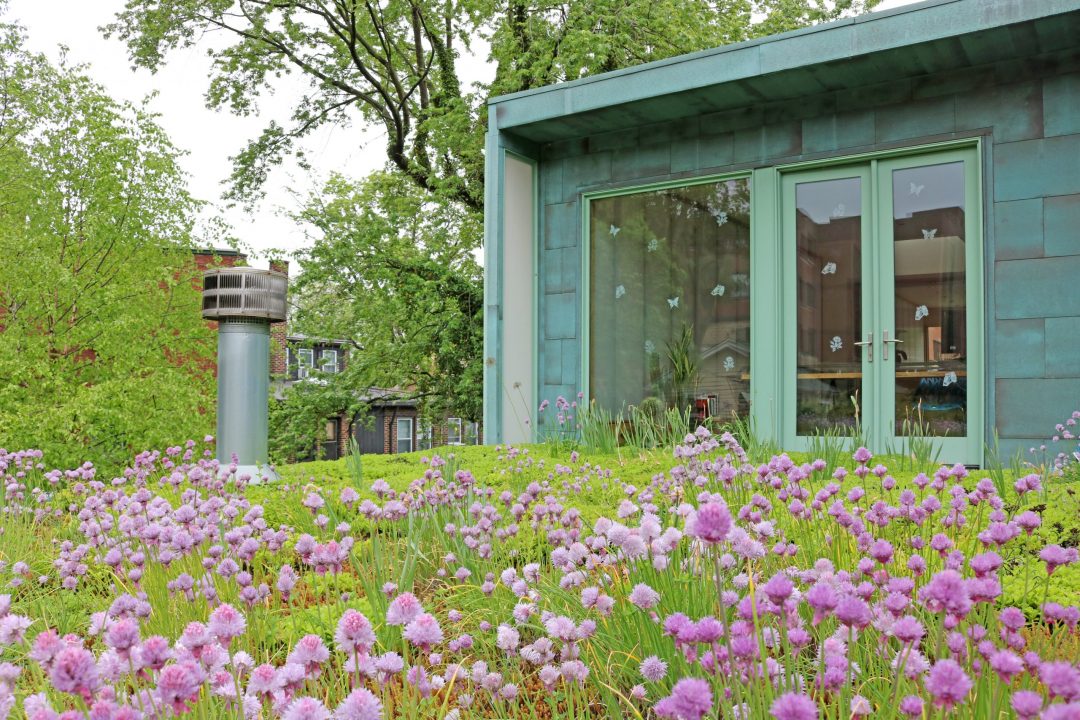
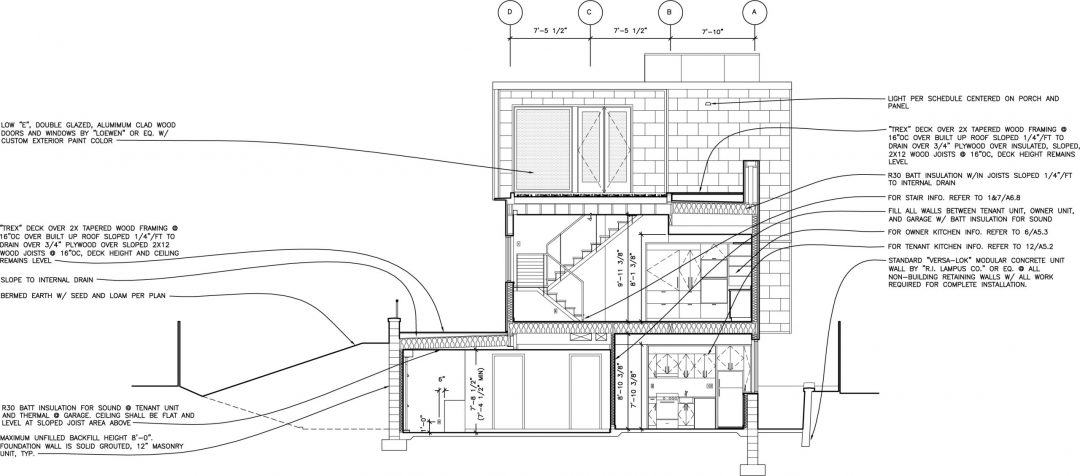
There are three main types of green roofs: Extensive, Semi-Intensive, and Intensive. Ours is an Extensive Green Roof, with six inches of soil (it varies a little because of the drainage slope) which can be planted with sedum and other herbs with small roots.
The weight of this system is ten pounds per square foot for every inch of soil depth. We planted sedum, allium, and bulbs. These plants require no permanent irrigation and, in southern Pennsylvania survive with irrigation from the sky only. (Pittsburgh receives 38 inches of rain on average per year, which is also the average of the US as a whole).
Maintenance really depends on your own preference. We try to keep the allium clustered as much as we can since it spreads easily, and we take time to weed clover and bittercress, which are invasive. From early Spring to late Summer we probably put in eight hours of maintenance a month. That’s about two hours a week.
It is a significant commitment but the reward is great!
